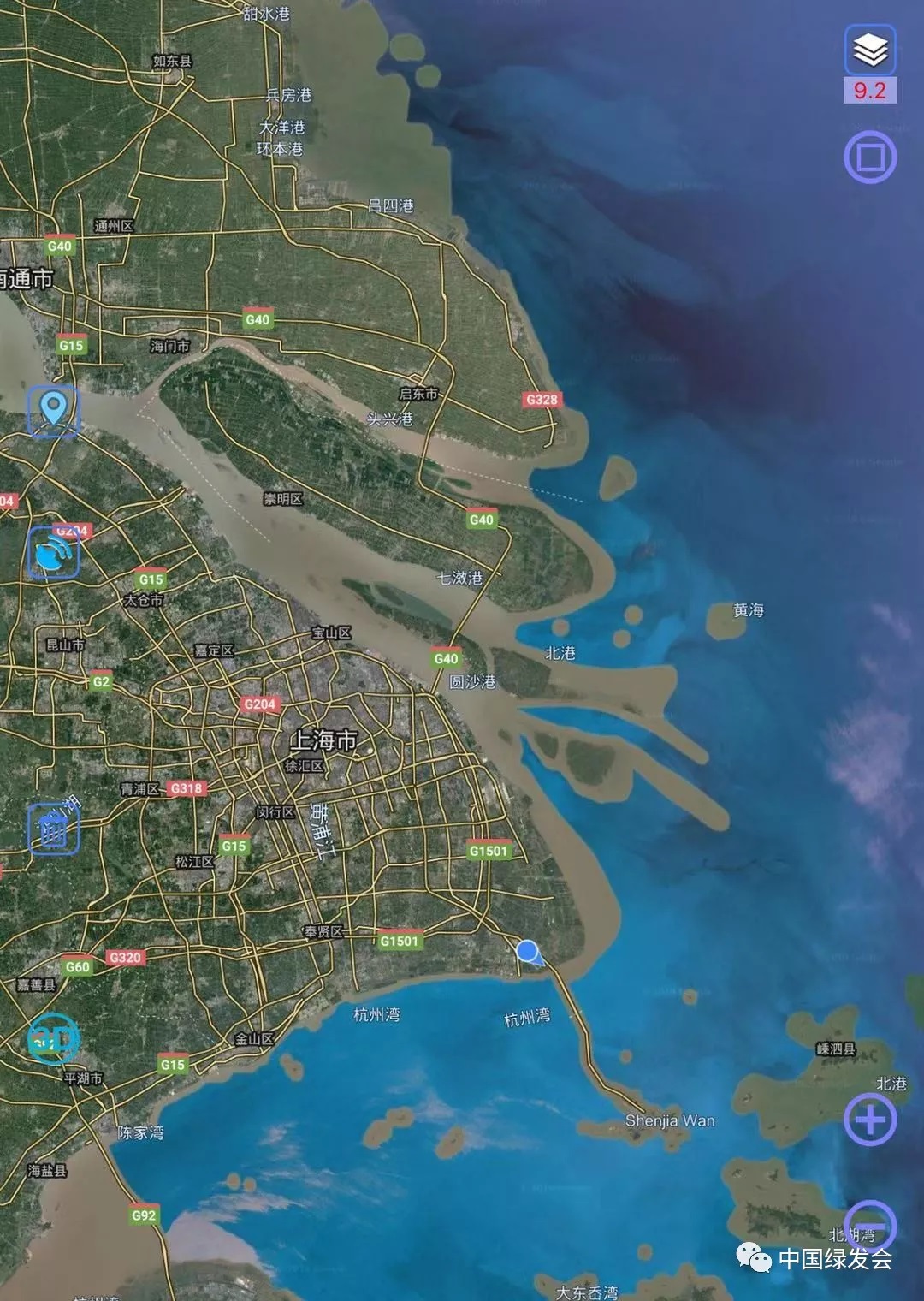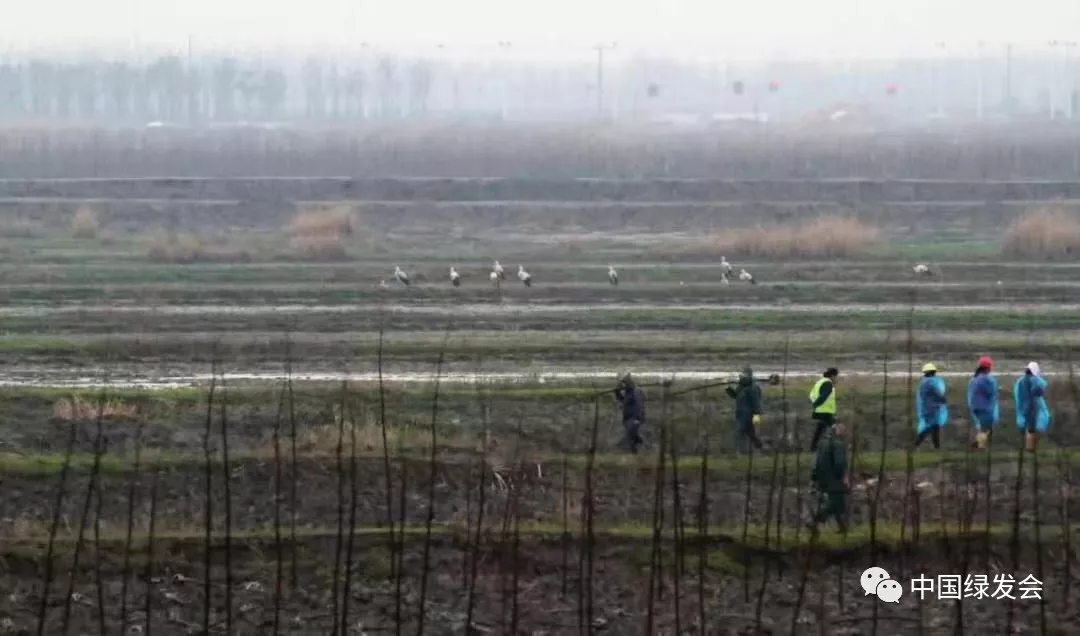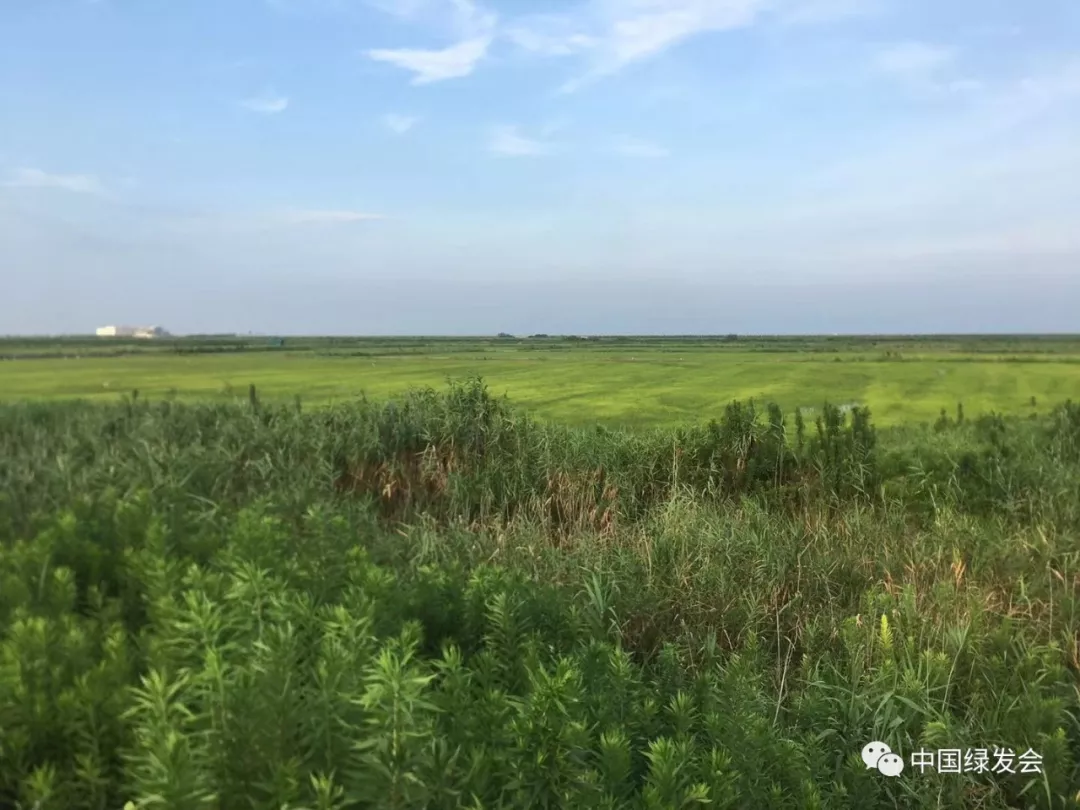"Nanhui New Town is born under the national strategy, which is originally a large amount of construction land," said the Lingang New Area Development and Construction Management Committee.
"In the eyes of the managers, as long as they don't farm or building, it's a wasteland, so they should think of ways to realize and develop it," said the protectors of Nanhui Dongtan Wetland.
This new town, which has grown out of the sea for more than 10 years, is still seriously insufficient in wetland function and protection consciousness. The idea is contrary to ecological civilization that has not been substantially transformed, which is one of the causes of frequent destruction of local wetlands.
In the spring of this year, volunteers opposed the planting of trees in the Nanhui Dongtan wetland, Shanghai. In addition to many articles condemning its afforestation, the CBCGDF also wrote a letter to relevant departments to stop damaging the wetland and to protect and restore the wetland ecosystem as soon as possible.
From July 25 to 27, at the invitation of Lingang New Town Development and Construction Management Committee and Nanhui New Town Government, representatives of the CBCGDF went to investigate the wetland status in Dongtan, Nanhui.
Nanhui New Town is located in the south of Pudong New Area, east to Yangtze River and south to Hangzhou Bay, covering an area of 152.15 square kilometers. It is just on the easternmost corner of the Yangtze River estuary. Before 2012, it was called Lingang New Town, and after 2012, it was formally renamed Nanhui New City after its administration was decentralized from Shanghai Municipal Government to Pudong District. In the past few years, its official name has once again become "Nanhui New Town". As for the extra word "town", when Shanghai people mention it, they will laugh and say the difference between "city" and "town", needn't say more.
The construction of Nanhui New Town began in 2002 and was completed in 2005. "It is mainly formed by natural siltation and artificial filling," said the Lingang New Town Development and Construction Management Committee in its introduction. At the beginning of construction, this brand-new urban area bears an important strategic task of national economic development and is the top priority of Shanghai's 13th Five-Year Plan.
The orientation of Nanhui New Town is mainly based on its special location, which is between Pudong Airport and Yangshan Deepwater Port. Relevant departments hope that relying on Shanghai International Shipping and Freight Center, Nanhui New Town will be developed into a modern coastal new town with comprehensive functions and integration of production and become a node along the Yangtze River. At the same time, the "future coastal city" supported by advanced manufacturing, shipping trade, and marine industry will eventually build a new round of demonstration zones of reform and opening-up driven by system innovation, Science and technology innovation, and intellectual and cultural innovation of the experimental demonstration zones.
The high development orientation of Nanhui New Town can be seen from it. In its development, Nanhui New Town always emphasizes the importance of blueprint.
However, as important as its economic development potential, wetland ecological value has been paid more and more attention in recent years both at home and abroad. Because it is also the largest natural wetland in Shanghai. According to official records, the wetland area of Nanhui Dongtan is 122.5 square kilometers. It starts from the enclosed area of Pudong Airport in the north, from Luchao Port in Nanhui New Town in the south, from Jiusi Pond in the west, and the seashore in the east. The wetland is rich in vegetation. The original plants are reed community and (Scirpus mariqueter Tang et Wang) community.
At the same time, the muddy beach is rich in benthic organisms, including mollusks, crustaceans, polychaetes, and fish, due to the sediment in the Yangtze Estuary, and then form land under the effect of seawater. The excellent beach environment attracts a large number of migratory birds from coastal areas every year to come here to rest. Therefore, Nanhui Dongtan naturally becomes an important transit station on the migration route of bird from East Asia to Australia. It is the first "bird paradise" in Shencheng and the area with the richest biodiversity.
According to Yuan Xiao of Shanghai Wildlife Conservation Administration Station and others in Wetland International and China, as of December 2009, 249 species of birds belonging to 46 families and 19 orders have been recorded in Dongtan, Nanhui. Among them, 25 species have been listed into national protection, 10 species have been listed into Shanghai's key protection, and they are listed into Appendix I of CITES Convention. There are 18 species. At the same time, five new records of Shanghai birds, including white crane, little Stint, Turdus chrysalis, Black-shouldered Kite and Himalayan Swiftlet were recorded. The number of three kinds of waterfowl, including Falcated Duck, Swinhoe's Egret and Sanderling, also exceeded 1% of the world's waterfowl population, and more than 20,000 waterfowls were recorded on September 2006.
In May this year, the latest observation records showed that 410 species of birds had been found in Nanhui Dongtan. All these monitoring data indicate that Nanhui Dongtan is an important resting place for migratory birds on the migration route, which has reached the internationally important wetland standards.
Lao Wan, a university teacher, formally became a bird-loving volunteer in Dongtan, Nanhui six months ago. For more than half a year, he has used his spare time to go to Nanhui Dongtan to watch birds, and now he knows more than 200 kinds of birds. "I never thought the bird resources here were so rich and beautiful before," Lao Wan, like other volunteers, he did not want the wetland resources to be destroyed.
On the morning of July 25, accompanied by the Lingang New Town Development and Management Construction Committee, representatives of the CBCGDF set out from Tangxia Highway and made field investigations all the way. Along the way, the "rings" of the new town can be seen very clearly. Because of the reclamation of coastal beaches, the basic practices have not changed substantially in the past decades. They are to build dikes first, then drain water, make wetlands changed into the land, and then build factories, buildings or farmland and water conservancy work.
"The oldest levee known to most people in Nanhui is the Qingongtang (now the old Dongchuan Highway), built by Qinlian in Nanhui Zhi County during Yongzheng, followed by the People Pond built after the invasion of the tide in 1949 and numerous casualties, followed by Shengli pond, Bawu pond, Jiusi pond, 2002 pond, Shiji pond," Forestry staff of Nanhui New Town said that when he was a child, he clearly remembered that between the People Pond and Shengli Pond, the army was stationed to reclaim large areas of rice fields, and the whole Nanhui New Town was formed from beaches from west to East year by year. "To ask for land from the sea is the same logic as the current economic construction." Relevant government officials admit that most of the places in Nanhui Dongtan that are accused by volunteers of not planting trees and rice are originally reserved land for construction.
Lao Wan is also one of the volunteers, believes that the destruction of Nanhui Dongtan wetland in recent years is mainly manifested by the inexplicable large-scale rental of rice, aquaculture, the disappearance of large areas of reeds, and large-scale planting and afforestation on wetlands, because in the view of managers, "as long as no land is planted, no buildings are built on it." It is a wasteland, so if we want to realize and develop it, the value of wetland ecosystem is seriously inadequate.
Even for land-based development and construction of beaches, local government officials acknowledge that since the operation of the Three Gorges Dam, the annual rate of new siltation of Nanhui New Beach in the Yangtze Estuary has decreased significantly. "In the past, every 10 years, a new dike was built. The average distance was about 3 kilometers between them. Now, after the completion of the dike in the 20th century in 2004, the dike has not been built again," said the staff of the Lingang New Town Development and Construction Management Committee. In July 2018, the State promulgated a policy to strictly control land reclamation along the coast, and to strengthen marine ecological restoration to ensure that the area of the red line of marine ecology is not reduced, which is another important reason why more than 100 square kilometers of beaches are still retained in the 21st century.
However, some studies have shown that in the development and construction of Nanhui Dongtan, the development and construction speed of wetlands and beaches has far exceeded the natural growth and deposition speed of beaches. Xu Junjie and Chen Yong published an article in Shanghai Land and Resources in 2011, pointed out that the reclamation of Nanhui Dongtan has shown a "slow to fast" development trend in the past 30 years. From 2002 to 2005, the rate has reached 35.27 times. The reclamation rate is much faster than the siltation rate, and the reclamation rate of 8 square kilometers per year is suitable.



(Photo credit: CBCGDF)
Original Chinese article:
http://www.cbcgdf.org/NewsShow/4854/9396.html
By / Li Xue
